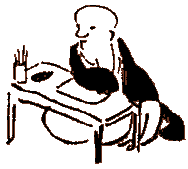
What is Haiku Poetry?

The poetry form of Haiku was developed in Japan and later became popular in the United States. Haiku is the shortest form of poetry in Japan. It tells a story or makes a picture in your mind of something that happens in nature. Many descriptive words are used in Haiku. The modern form of Haiku dates from the 1890's and developed from earlier forms of poetry. Hokku and Kaikai. The great Japanese master of Haiku was Matsuo Basho (1644 - 1694). The name Basho means "banana tree," and was adopted by the poet when he moved into a hut located next to a banana tree.
Haiku Characteristics
Haiku consists of 17 syllables and is usually written in three lines. There are five syllables in the first line, seven in the second, and five in the third. It does not rhyme. Each Haiku must contain a kigo, a season word, which indicates in which season the Haiku is set. For example, cherry blossoms indicate spring, snow indicates winter, and mosquitoes indicate summer, but the season word isn't always that obvious. The poem contains a "cutting" or division between two contrasting parts. In English, the first or second line usually ends with a colon or long dash to indicate this cutting. In writing Haiku, contemplate nature and the present moment. Use verbs in the present tense, and choose each word very carefully.